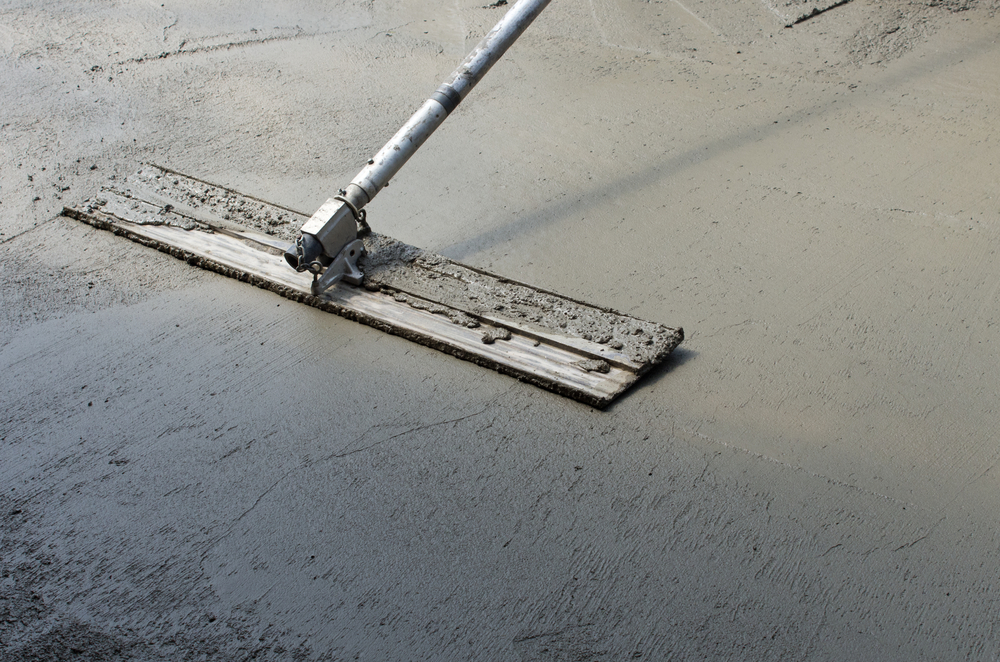Can You Trowel Concrete Too Much? | AA Rental, Texas
Troweling is a crucial step in the concrete finishing process, but it’s important to know when to stop. At AA Rental in Texas, we provide the tools and expertise to help you achieve the perfect concrete finish. This article explores the potential risks of over-troweling concrete and offers tips on how to avoid this common mistake.
Understanding Troweling
Troweling involves smoothing and finishing the surface of freshly poured concrete using a trowel, which can be either hand-operated or powered. The process compacts the surface, creating a dense, smooth finish that is both aesthetically pleasing and durable. However, like many aspects of construction, timing and technique are critical.
The Risks of Over-Troweling
Burnishing: Over-troweling can lead to a condition known as burnishing, where the concrete surface becomes overly polished and glossy. While this may seem desirable, a burnished surface can be slippery when wet, creating a potential safety hazard, especially in areas prone to moisture, such as driveways, sidewalks, and pool decks.
Surface Cracking: Excessive troweling can cause the surface of the concrete to become too hard, which can lead to surface cracking as the concrete continues to cure. This occurs because the surface sets faster than the underlying layers, creating internal stress that manifests as cracks.
Scaling and Delamination: Over-troweling can cause the concrete surface to become too dense, trapping water just below the surface. As the concrete cures, this trapped moisture can lead to scaling (flaking of the surface) and delamination (separation of the surface layer from the underlying concrete), compromising the durability and appearance of the slab.
Weakened Surface: In some cases, over-troweling can cause the surface layer of concrete to become too thin and brittle. This can result in a weakened surface that is more susceptible to wear, erosion, and damage from traffic or environmental factors.
Difficulty in Applying Finishes: Over-troweling can create a surface that is too smooth for certain finishes to adhere properly. For example, if you plan to apply a sealer, stain, or paint to the concrete, an overly polished surface may prevent these finishes from bonding effectively, leading to peeling or chipping.
Best Practices to Avoid Over-Troweling
To avoid the risks associated with over-troweling, it’s important to follow these best practices:
Monitor the Concrete Setting Time: Pay close attention to the setting time of the concrete. Begin troweling when the surface is firm enough to support the trowel without leaving deep impressions, but still pliable enough to work. Avoid troweling too early or too late in the setting process.
Use Multiple Passes Wisely: While multiple passes with the trowel can help achieve a smooth finish, it’s important to avoid excessive passes, especially if the surface is already smooth. Focus on achieving the desired finish with the fewest possible passes.
Adjust the Trowel Angle: When using a hand trowel, adjust the angle of the trowel blade to avoid creating too much pressure on the surface. A slight angle is sufficient to smooth the surface without over-compacting it.
Consider Environmental Conditions: Environmental factors such as temperature, humidity, and wind can affect the setting time of concrete. In hot, dry conditions, concrete may set faster, increasing the risk of over-troweling. In such cases, take extra care to monitor the surface and adjust your troweling technique accordingly.
Use the Right Equipment: Choosing the right trowel for the job can help prevent over-troweling. Power trowels are ideal for large surfaces, while hand trowels offer more control for smaller, detailed work.
Renting Troweling Equipment from AA Rental
At AA Rental in Texas, we provide a range of high-quality troweling equipment to help you achieve the perfect finish for your concrete projects. Whether you're working on a large commercial slab or a small residential driveway, we have the tools you need to get the job done right. Here’s why renting from us is a smart choice:
Top-Quality Equipment: Our troweling tools, including hand trowels and power trowels, are regularly maintained and serviced to ensure they deliver the best performance. This helps you achieve a smooth, even finish without the risk of over-troweling.
Expert Guidance: Our team of knowledgeable professionals is available to assist you in selecting the right troweling equipment for your project. We can provide advice on the best practices for troweling and how to avoid common pitfalls like over-troweling.
Flexible Rental Options: We offer flexible rental terms to suit your project timeline and budget. Whether you need equipment for a single day or an extended period, we have rental plans that fit your needs.
Cost-Effective Solutions: Renting troweling equipment from AA Rental is a cost-effective alternative to purchasing expensive tools outright, especially if you only need them for a short-term project. You get access to professional-grade equipment without the high upfront costs.
Conclusion
Troweling is a crucial step
in the concrete finishing process, but it's important to avoid over-troweling
to maintain the integrity and safety of the surface. By following best
practices and using the right equipment, you can achieve a smooth, durable
finish that meets your project's requirements. At AA Rental in Texas, we
provide the tools and expertise you need to complete your concrete projects
with confidence. Contact us today to learn more about our troweling equipment
rental options and how we can support your next project.




Comments
Post a Comment